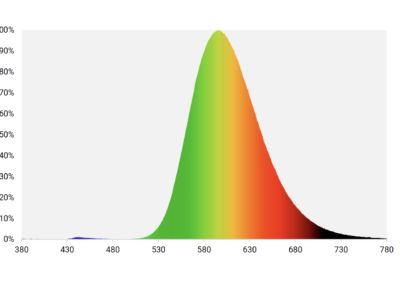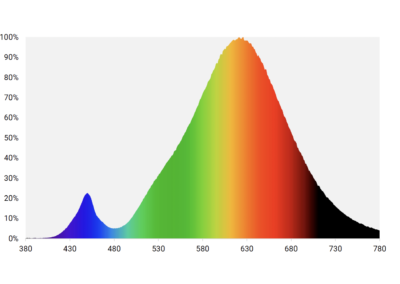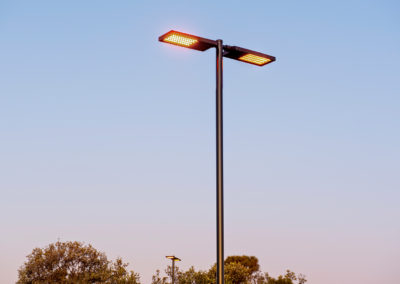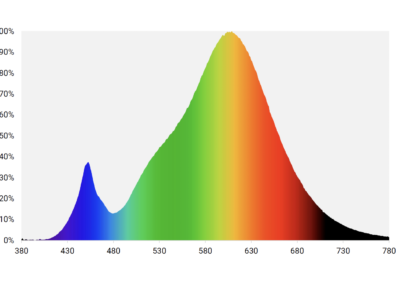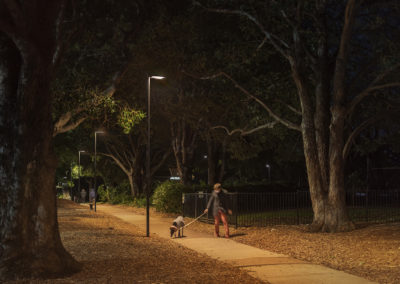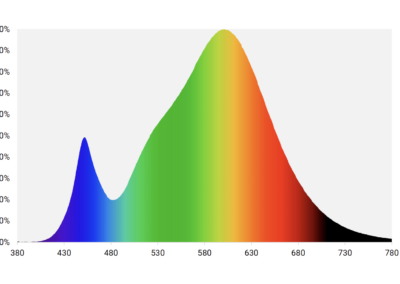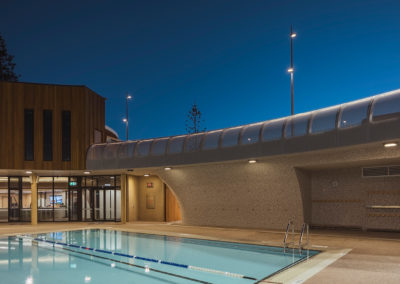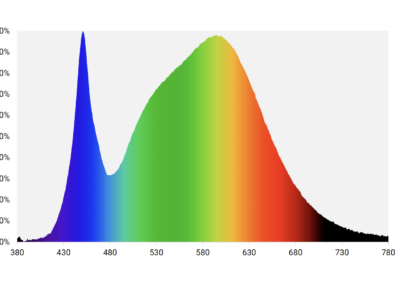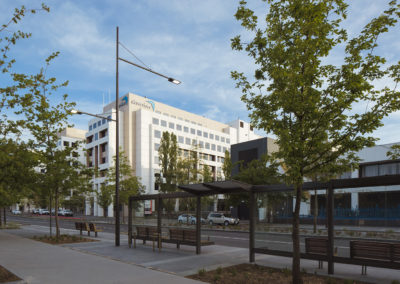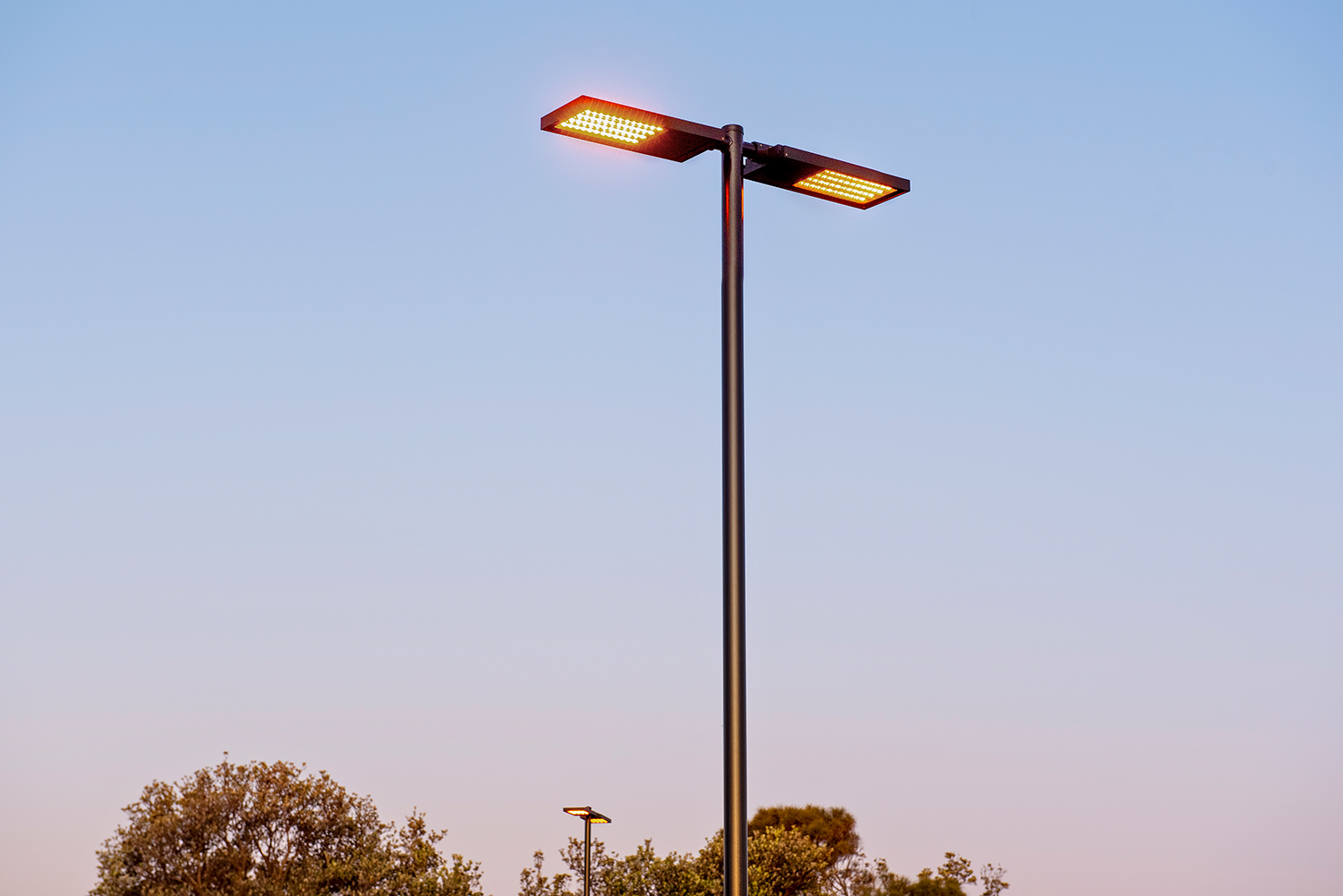
WE-EF Colour Temperature Demonstration Kit
How we perceive light
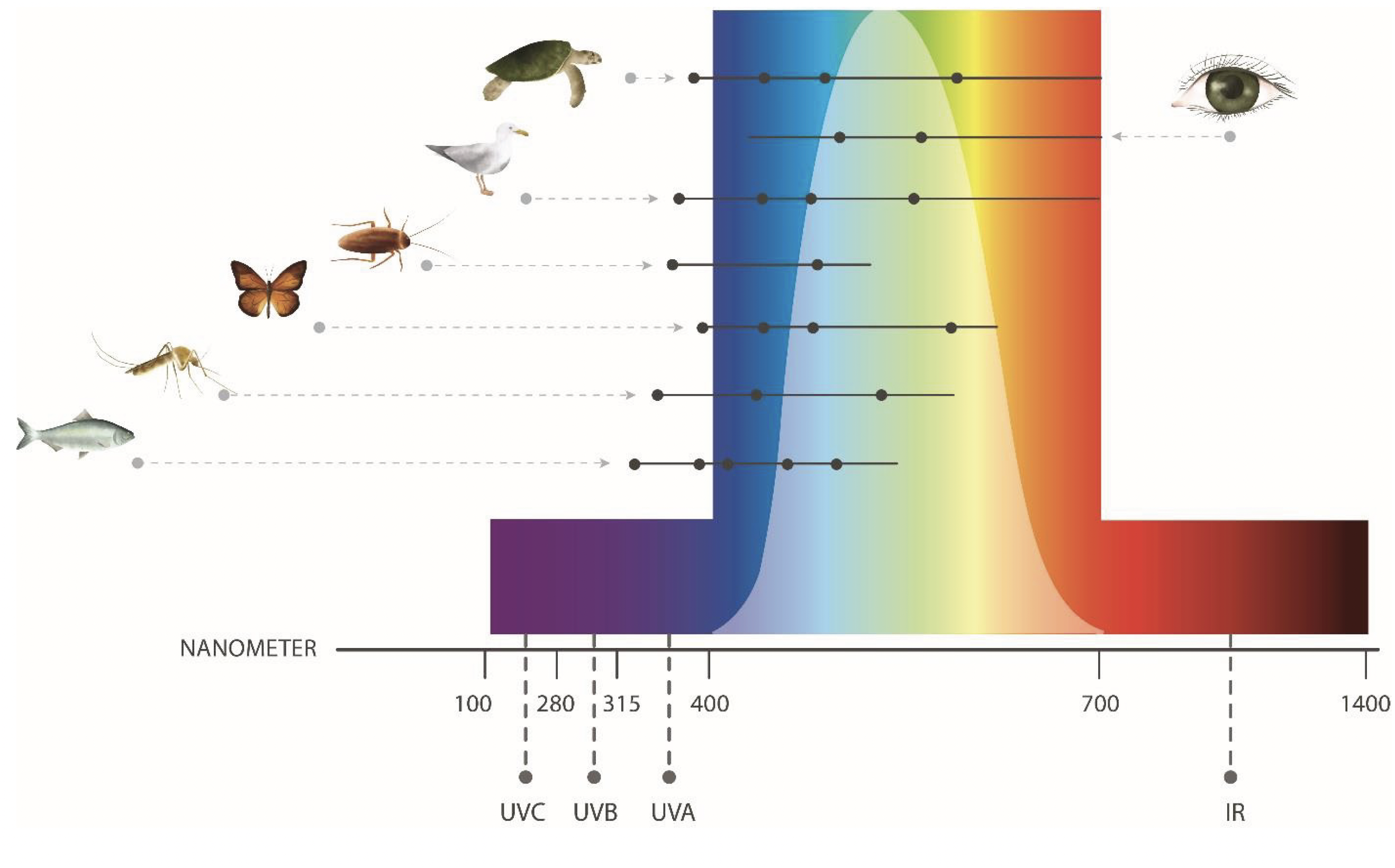
Spectral Power Distribution
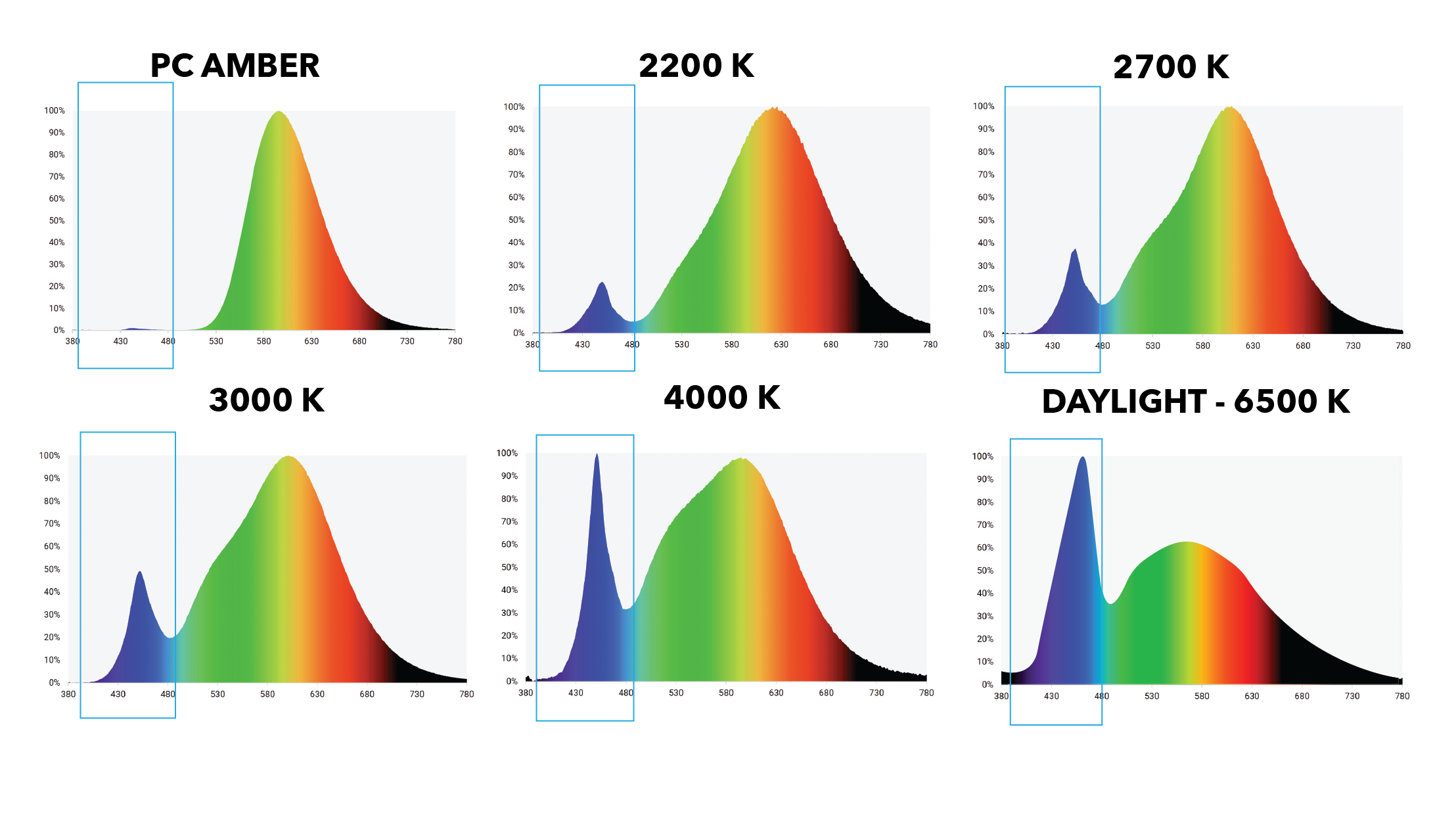
PC Amber LED
Equivalent to 1800-2000 K, PC Amber can be likened to that of sunrise, sunset or a candle flame. With PC Amber, UV/violet/blue light content is ≤2%.
And while Amber is monochromatic with a peak wavelength of 590 to 595 nm, PC Amber allows far more visible light to get through. Humans as well as most wildlife are sensitive to shorter wavelengths (blue), with it impacting their behaviour, psychology, survivorship and reproductive output. It also alters circadian rhythms for all living beings. As such, when there is a need to introduce artificial light into a space where wildlife is of significance, the adoption of PC Amber (together with clever controls like time and motion sensors) is considered the best artificial light source for wildlife sensitive applications.
2200 K LED (Very Warm White)
This is the lowest possible colour temperature for white light (any lower is yellow light). 2200 K is used in atmospheric, low key settings. It is also similar to High-Pressure Sodium (HPS) commonly used for older style street lights.
2700 K LED (Warm White)
Similar to traditional halogen-type landscape lighting, it is the most preferred colour temperature for exterior lighting, particularly landscape architecture and is a great option for parks and open spaces, pathways, plazas, etc. Psychologically, it is thought to be more welcoming and soothing compared to cooler colour temperatures.
3000 K LED (Warm or Natural White)
Noticeably cooler than 2700 K, it becomes more common in applications with higher human traffic and minimal wildlife.
4000 K LED (Cool White)
With considerably higher blue light content than 2700 K, these LEDs are still often used in areas requiring high illumination levels. For example, it is adopted at railway stations and on railway platforms. It is also used to simulate moonlight (4200 K). In modern lighting applications, with a greater understanding of the need to minimise light pollution, we see that there is seldom a need to use temperatures as cool as 4000 K, with 3000 K being able to achieve great output and distribution without overlighting.
